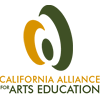Juilliard scholar Edward Bilous eloquently presents the case for a comprehensive, longitudinal arts education in this April 2012 lecture. He beautifully articulates the unique role that arts play in engaging and nurturing our creative intelligence, providing a meta-learning experience, and reinforce the interconnects of the learning process. His argument that the role of education has shifted from information transfer to information processing because of technology advances is insightful. He ends by explaining that, "Imagining is more important than accumulating and creating is more important than consuming."
You can read the full transcript of his lecture or watch the video. It runs just over 23 minutes.
http://www.juilliard.edu/journal/2011-2012/1205/articles/schuman-lecture.php









